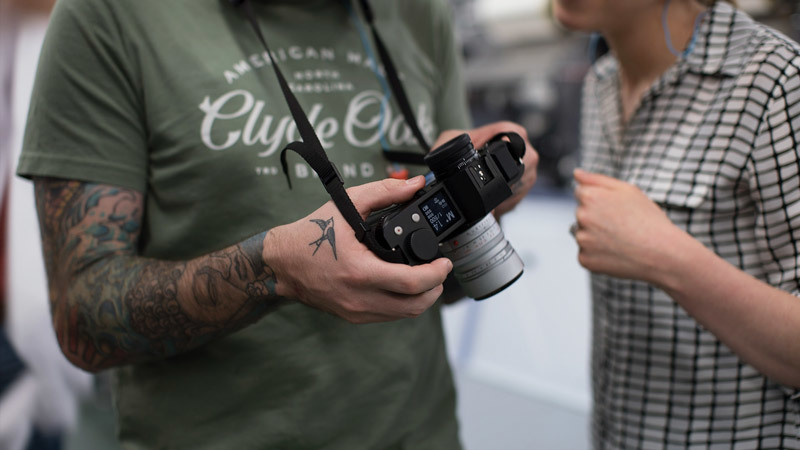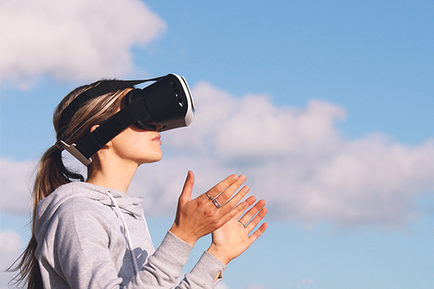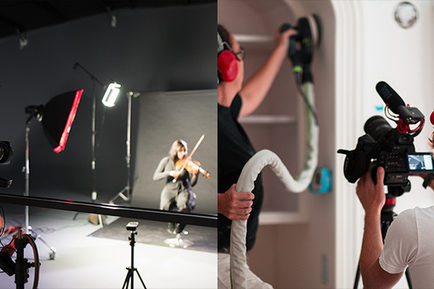Creative
Television and Video
Virtual reality (VR) and 360-degree video content are growing by the hour. In particular, 360-degree video is a perfect fit for the home and building category, and the Motion team here at Wray Ward has had some great opportunities to do video storytelling using the technology.
But there’s still a lot of confusion out there surrounding the difference between VR and 360-degree video, when to use these filming methods and how to take full advantage of everything they have to offer.
VR and 360-degree video are different approaches.
Virtual reality is exactly as it sounds: it puts viewers in an alternate or virtual reality world. You need a headset to experience VR, and while you’re in that other world, you’re moving your head, controlling your own movements and generally operating in a space that’s cut off from the rest of the world. VR videos have more depth than 360-degree videos. But they’re also extremely complex and not always necessary or even ideal for certain deliverables. And while the technology is getting much better, it’s not quite there. Headsets are still fairly heavy and often have to be tethered to a computer.
Today at Wray Ward, we primarily work with 360-degree video to create branded video content, which can be captured by the same means as VR but is served up to people in a different way. In this instance, you stay in a fixed position but have the ability to turn your head (the camera) and navigate a spherical video, including left to right and top to bottom.
Both create an immersive experience.
VR and 360-degree video have an immersive quality that distinguishes them from other techniques. When we produce 360-degree videos, the stories aren’t necessarily unique from stories we could tell with traditional videos, but we give viewers a sense of freedom and choice. They can pick where they go in the frame and alter their point of view. That’s what makes 360-degree video a game-changer.
From a technology standpoint, pulling off 360-degree videos is easier than we ever imagined it would be, because manufacturers have done a great job with affordable tools and our team understands how to use those tools.
This might come as a surprise, but 360-degree video is probably the rawest of any video we shoot. We don’t touch the space or add any special lighting. We film it in its natural state, and afterward, we go back and add graphics to the 3-D space. We can layer in explanations or descriptions, add design elements or urge the eyes to a certain place.
Immersive content is changing the way we tell stories.
Giving viewers a choice? It’s a totally different approach to telling stories. In a way, it’s also a challenge for production teams charged with molding or shaping a certain story for a client. We have to strike the right balance to honor that story without restricting viewers. We do that with special techniques that steer (rather than force) people to look a certain way, using visual and audio cues.
It’s a great way to let viewers dive right in and see what a product can really do. And the results are amazing: for example, when used in email marketing, these videos get great engagement rates and long viewing times. Once people start watching a 360-degree video, they tend to stay awhile. They’re spending time in the space (with the brand’s product).
When we create a 360-degree video, we leverage the viewer’s perspective to tell a story, which sends a powerful message to them: Go ahead and explore. Take your time.
Give it a try with this video for HURST Jaws of Life.
The technology is a perfect fit for the home and building category.
Anything to do with home is really personal, which makes 360-degree video perfect for the home and building category. While we shouldn’t use it for everything, it’s a great option for certain brands and their products.
Take VELUX skylights, for example. Skylights can really transform a room, but it can be hard to experience them without actually being there. That’s where 360-degree video comes in. We can film a builder talking about skylights, and the viewer can actually experience how a skylight changes a room. Or, we can show the viewer what happens when the room lights up. That impact is so powerful in a 360-degree environment. It doesn’t use any tricks or special lighting — instead, the viewer gets to really see what it’s like to sit in that room and watch the skylights open.
Some big-box home retailers are starting to offer more 360-degree video demos in-store. For example, the technology can help shoppers understand how a certain furniture layout will look. And as online shopping continues to get bigger, giving people the ability to envision products in their own home is becoming a powerful sales tool.
It’s a great marriage of digital and video.
I love how this technology bridges what I do, video production, with what our Digital team does, create amazing websites and online experiences. Our Digital team can take the footage we capture and use it to tailor the customer experience. They can add hot spots and control pans and provide descriptive information, all in a seamless way.
The last thing we want to do is invest time and money into technology that’s difficult to experience. A great synergy between digital and video is the key to making sure this doesn’t happen and people can easily interact with incredible video content online.
VR and 360-degree video technology will continue to grow.
I can’t wait to watch this stuff continue to grow. Over time, it will become even more integrated in the mobile app space, making it more easily accessible. We’ll have more advanced cameras. Videos will have higher resolution. Stories will have more depth. Graphics will get better. We’ll build layers upon layers of narrative graphics and callouts and animations in these amazing, immersive spaces.
But it all comes with a catch.
No matter what, we still have to be thoughtful about the user experience. We have to have a good reason to shoot VR or 360-degree video, even today. How will viewers engage with the space? Does the technology enhance the story? Or is it technology for technology’s sake?
Ultimately, I believe that’s the role of teams like ours. The technology is becoming so affordable that a lot of people can go out and shoot a 4K 360-degree video now, but we can really harness these tools and shape stories that have the power to inspire or sell.
That’s why, at the end of the day, the people behind the camera will always be the most powerful tool of all.


